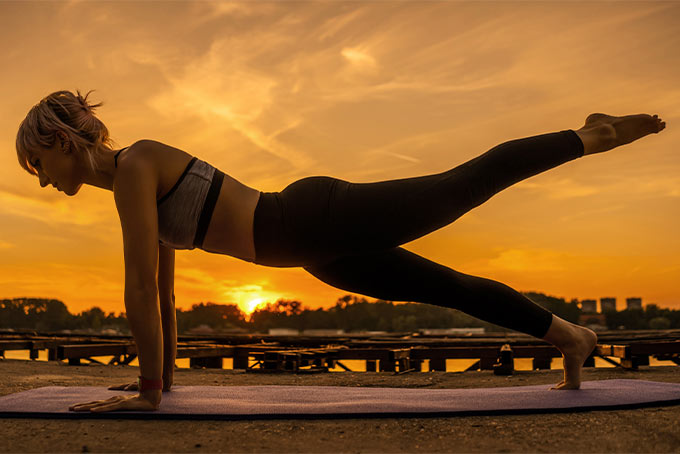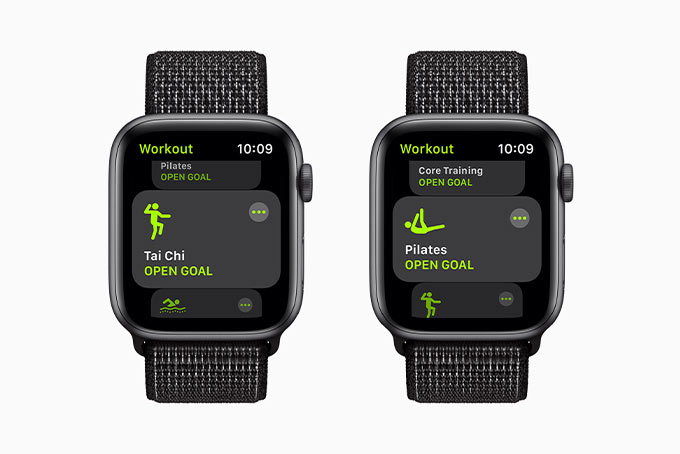In the words of fictitious fashion auteur Edna Mode, “I never look back, darling. It distracts from the now.” If you think mindfulness is the preserve of monastic, ashram-going folk, think again. So what is all this talk of mindfulness and why do so many experts stress the importance of living in the now? It’s a question on the minds of developers and researchers at Apple who have holistic wellbeing at the forefront of their health-related apps. Vogue Singapore spoke to Julz Arney, Apple’s director of fitness and health technology, on how we can harness tech to tune into this frequency of mindfulness.
What is mindfulness?
Mindfulness is intentionally focusing your awareness on the present moment, examining it for what it is without judgement. Our awareness is the key to engaging and connecting with ourselves and the world around us. Staying mindfully in the present can help to reduce psychological states of anxiety, depression and stress while increasing mental wellbeing, say researchers at the University of Cambridge.
Engaging our awareness
We wake up, eat, work, sleep, rinse, repeat, and wonder why we’re burntout and miserable. Taking charge of our lives means coming off autopilot and living with intention. More than ever, people are recognising the importance of finding pockets of the day to focus on what’s really happening deep within. Just as workout apps engage the body, Apple’s Mindfulness app zeros-in on our mental health and ability to live in the present. Apple Watch began its mindfulness journey with the Breathe app “because it meant you didn’t need to know anything about meditation. You didn’t need to know anything about mind training or even what mindfulness was. You just needed to be willing to physically take a deep breath,” explains Arney.
Small moments of mindfulness count
“Small moments of mindfulness are as impactful, the science says, as doing longer sessions like sitting in a meditation,” says Arney. “If you want to build a habit, you have to start small, you have to start frequently. It’s got to be available to you and it’s got to be approachable. What better place than the device that’s right there on your wrist all day long. That’s how users get motivated. It’s the same with mindfulness.”
Hack your mindfulness practice
“If you ask mindful experts how to best build your practice, it’s to bookend your day with these kind of core reminders. The second principle is setting an intention. If you practice anything in the mindfulness space, whether it’s yoga, pilates, meditation or breathing, the simplest way to expand that experience is to set an intention. That’s a really empowering and important part of mindfulness” says Arney, who says these moments set us up for creating better habits.

Breathwork made easy with Apple
Breathe sessions found in Apple’s Mindfulness app “invites users to take moments in their day to follow deep breathing sessions that are as short as one minute.” Simply focusing your attention to your breath and slowing it down “prompts a physical relaxation response that can help you better manage everyday stress. It’s a really simple concept, something you can do almost anywhere, any time,” says Arney. The default rate of box breathing is seven breaths per minute. “To land on this number, Apple studied more than 200 users from trained yoga and meditation teachers to even people with respiratory difficulties such as asthma or Chronic Obstructive Pulmonary Disease (COPD), finding that seven breaths a minute was the most comfortable for all.
“The refreshed design offers flower-inspired visualisations and haptic cues that guide users to inhale a deep, full breath and exhale at a pace that taps into the parasympathetic nervous system to unlock that feeling of relaxation.” Ultimately for Arney, “You don’t even need to know the science in order to get the benefits, it’s just your body’s natural response to know this kind of breathing.” Each Breathe session can be adjusted to be as short as one minute or five, ” and just like being active in small increments throughout your day can have great health benefit, there’s also evidence that moments of mindfulness that are sprinkled throughout your day or as useful, if not more beneficial as a single longer session, just like exercise.”
Generating positive mind states with Reflect
If you’re new to meditation or just plain intimidated by the idea of being alone with your thoughts, Reflect, also found in the Mindfulness app is perfect for beginners.
“Reflect is a simple way to direct and focus your thoughts. Much like meditation, it’s training for your mind,” says Arney. “Pausing and stepping back from the busyness of your day is a mindfulness practice in and of itself. Each session begins with a gentle prompt: ‘Take a moment to pause’. And then you’re going to be given the suggestion for one simple idea to hold in your mind. This one is ‘bring to mind someone you’re grateful for, reflect on why you appreciate them so much.’ And this will be different each time you reflect. These simple prompts are intended to turn you to a curious and kind frame of mind towards yourself and others.”
Beyond warm and fuzzy words, these prompts in Reflect “have been well demonstrated in scientific research to improve our ability to regulate our emotions, and that is a part of training for resilience. Regulating our emotions and working on our ability to be more resilient create a more positive mindset and sense of wellbeing.”
To reinforce the mind-body connection, all sessions using Breathe and Reflect end with a summary that reveals your ‘Mindful Minutes’ and average heart rate from your session. At present there are over 100 reflective prompts with Apple looking to add more in the future. Finally, to complete your daily mind-body experience, Apple has also added two workouts in the Workout app that support the push towards mindful movement.

“First, there’s a new tai chi workout for users who practice the 2,000-year-old Chinese martial arts with its gentle approach that’s like meditation in motion. Tai chi helps reduce stress and find a more peaceful state of mind, and then pilates, also a new workout type. Pilates is one of the best ways to develop core strength, posture, balance and flexibility, but with a mindfulness approach on its own. Those also come in with WatchOS 8.”
These workouts are supported by heart rate and motion algorithms to provide users with accurate metrics as they work out.

The mindful experiences don’t just end there. A simple search on it Apple’s App Store reveals third-party meditation apps such as Calm and Headspace apps, leading a growth industry that’s expected to reach USD 4,206 million by 2027. Thankfully all mindfulness requires is a willingness to sit undistracted, as confronting as the feeling may be to the uninitiated—leaning into the discomfort and holding space for yourself. “One thing that I think makes Apple so unique is our third-party app ecosystem; the App Store and the ability for us to provide really lightweight, easy-to-interact-with gateway experiences that you can have right there on your device,” says Arney. “But then we have the entire app store where you can go deeper if you want to explore a certain type of mindfulness. There’s something for everyone in there.”





